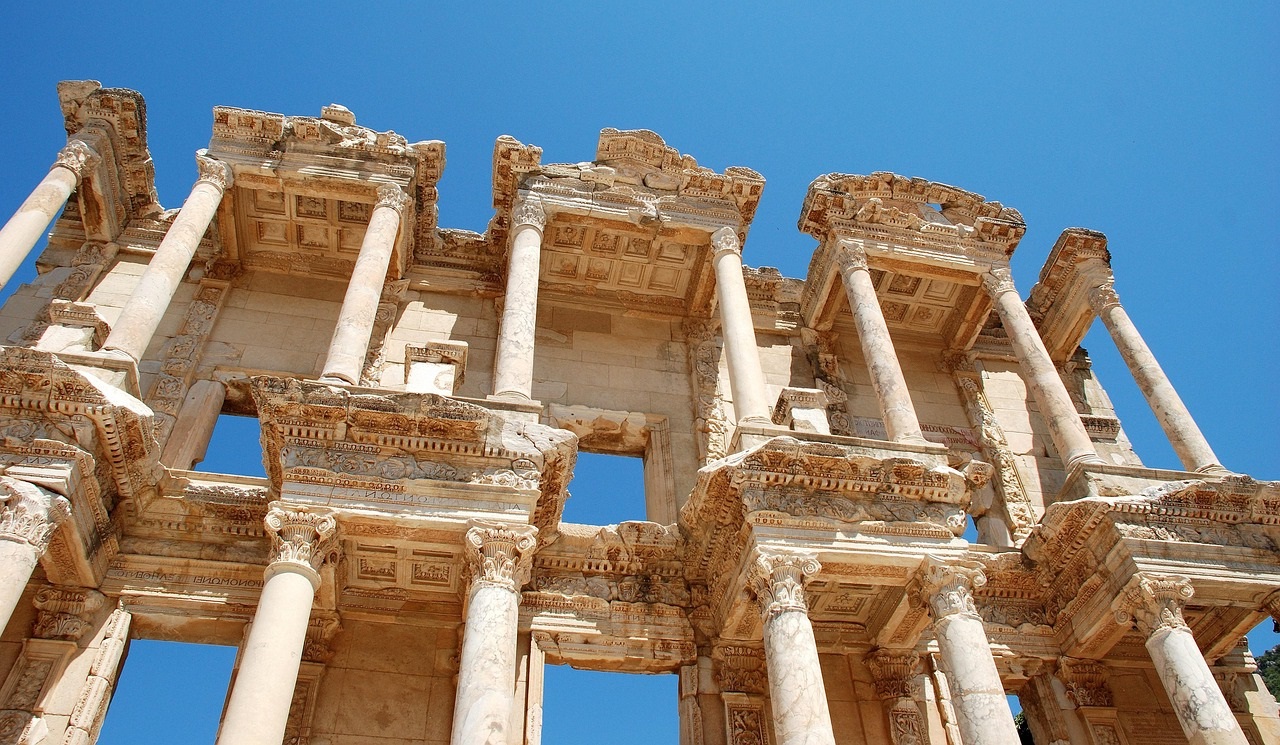 Ephesus, Turkey – A Timeless Greco-Roman Gem of the Ancient World
Ephesus, Turkey – A Timeless Greco-Roman Gem of the Ancient World
Nestled on the western coast of modern-day Turkey, Ephesus stands as one of the most iconic and well-preserved cities of the ancient Greco-Roman world. Renowned for its architectural grandeur, religious significance, and historical influence, Ephesus attracts travelers, historians, and archaeologists alike. It’s not just a tourist destination—it’s a living museum that tells the story of thousands of years of civilization, conquest, and culture.
In this article, we explore the key features, historical importance, and timeless allure of Ephesus, Turkey, highlighting why this ancient city remains a Greco-Roman gem and a must-visit location for any history enthusiast or cultural traveler.
🌍 A Brief History of Ephesus
Ephesus dates back to the 10th century BCE, originally founded by Ionian Greeks. It rose to prominence under the Lydian king Croesus, and later flourished during Roman rule, becoming one of the largest cities in the Eastern Roman Empire with a population of over 250,000.
The city was a major commercial, cultural, and religious center, especially known for housing the Temple of Artemis—one of the Seven Wonders of the Ancient World. Throughout its history, Ephesus played a key role in the spread of Christianity, being mentioned in the Bible and hosting the Council of Ephesus in 431 CE.
🏛️ Top Features and Attractions in Ephesus
1. Library of Celsus
One of the most photographed and iconic ruins in Ephesus, the Library of Celsus was built in the 2nd century CE as a tribute to the Roman senator Tiberius Julius Celsus. The façade still stands tall today with intricate carvings and statues symbolizing wisdom, knowledge, and virtue.
-
Capacity: Held over 12,000 scrolls.
-
Architectural style: Greco-Roman with Corinthian columns.
-
Purpose: Served both as a library and a mausoleum.
2. The Great Theatre
The Great Theatre of Ephesus is a massive structure capable of holding 25,000 spectators. Initially built during the Hellenistic period and later expanded by the Romans, it was used for:
-
Drama performances
-
Gladiator fights
-
Political meetings
-
Early Christian preaching (including by St. Paul)
Its acoustics and engineering remain impressive to this day.
3. Temple of Artemis
Although only a few columns remain today, the Temple of Artemis was once a grand marble temple dedicated to the Greek goddess Artemis (Roman: Diana). It was four times the size of the Parthenon and known for its artistic excellence and religious importance.
-
Considered one of the Seven Wonders of the Ancient World.
-
Attracted pilgrims and merchants from across the Mediterranean.
4. Terrace Houses (The Houses of the Rich)
Located on the slopes of the hill opposite the Temple of Hadrian, these well-preserved residences show how the wealthiest citizens of Ephesus lived.
-
Features: Mosaic floors, frescoed walls, heating systems, courtyards.
-
Offers a unique look into Roman domestic life.
5. Curetes Street
This was one of the main streets of ancient Ephesus, lined with:
-
Temples
-
Public fountains
-
Monuments
-
Shops
Curetes Street connected the Library of Celsus with the Heracles Gate, making it a vital artery of commerce and culture.
⛪ Religious Significance of Ephesus
Ephesus holds an important place in both pagan and Christian history.
Pagan Worship:
-
Dedicated to Artemis, with her temple being a major center of worship.
-
Other deities honored included Zeus, Hermes, and Dionysus.
Christian Legacy:
-
Mentioned in the Book of Revelation as one of the Seven Churches of Asia.
-
St. Paul preached here, and his letters to the Ephesians are part of the New Testament.
-
Virgin Mary is believed to have spent her last years near Ephesus, in the House of the Virgin Mary, a significant pilgrimage site today.
🧭 Why Visit Ephesus Today?
Ephesus is more than just ancient stones—it’s a journey through time. Visitors come from all over the world to:
-
Walk streets once walked by philosophers, kings, and apostles.
-
Admire classical architecture and marble monuments.
-
Explore Roman baths, agoras, and temples still standing after centuries.
-
Reflect in sacred Christian sites.
Modern-day Ephesus lies near the town of Selçuk, about an hour from Izmir Airport, making it accessible for day trips or extended exploration.
📈 The Growing Appeal of Ephesus in Global Tourism
As global interest in historical travel grows, Ephesus has become a top destination for cultural tourism in Turkey. Recognized as a UNESCO World Heritage Site, it attracts over 2 million visitors annually.
-
Cruise ships often dock in nearby Kuşadası, bringing tourists to Ephesus as a highlight stop.
-
Tour guides offer in-depth historical perspectives, with multilingual options available.
-
Restoration efforts continue to preserve and reveal more of the ancient city’s wonders.
🛎️ Travel Tips for Visiting Ephesus
If you’re planning to explore this Greco-Roman marvel, here are some helpful tips:
-
Best time to visit: Spring (April–May) or Fall (September–October) for pleasant weather.
-
Duration: Allocate at least 3–5 hours for a full visit.
-
What to wear: Comfortable walking shoes, sun protection (hat, sunscreen), and water bottles.
-
Nearby Attractions: Temple of Artemis, House of Virgin Mary, Basilica of St. John, and the Ephesus Archaeological Museum in Selçuk.
🏆 Ephesus in the Eyes of the World
Ephesus stands shoulder to shoulder with sites like Pompeii, Athens, and Rome. It encapsulates the rich fusion of Greek creativity and Roman engineering. For travelers seeking inspiration, historical depth, and architectural beauty, Ephesus delivers an unforgettable experience.
Its story—told through stones, statues, and scriptures—continues to captivate the imagination of modern visitors just as it did in ancient times.
🔍 Conclusion
Ephesus, Turkey, is not just a destination; it’s a timeless journey through the heart of the ancient world. As a Greco-Roman gem, it offers unmatched insight into the architecture, religion, politics, and daily life of one of the most fascinating eras in human history.

You must be logged in to post a comment.